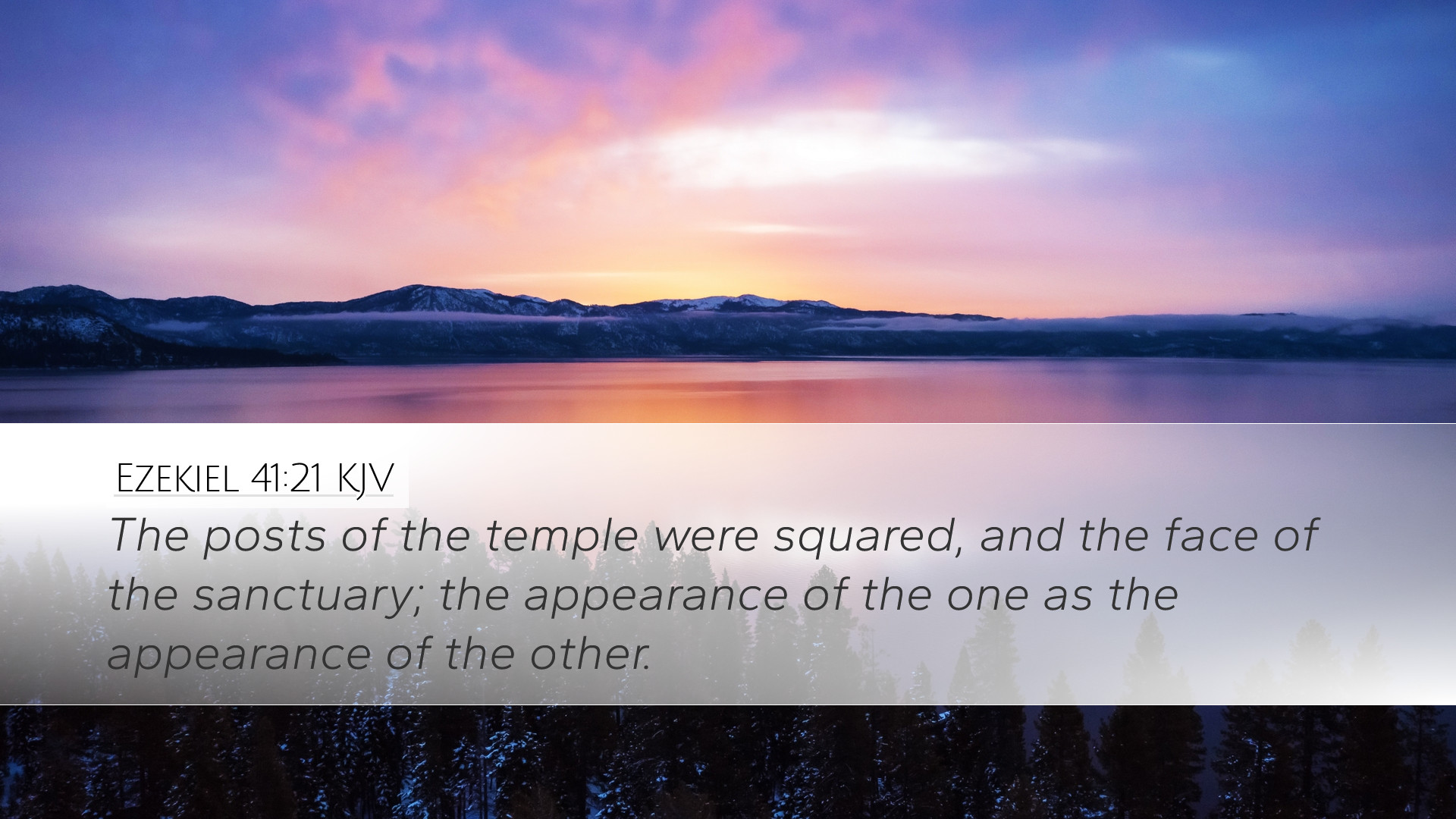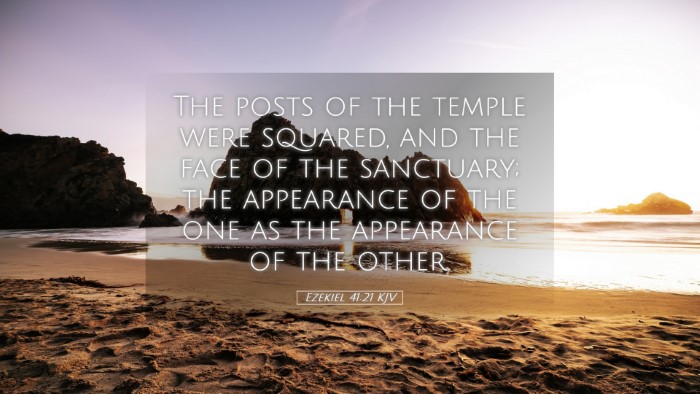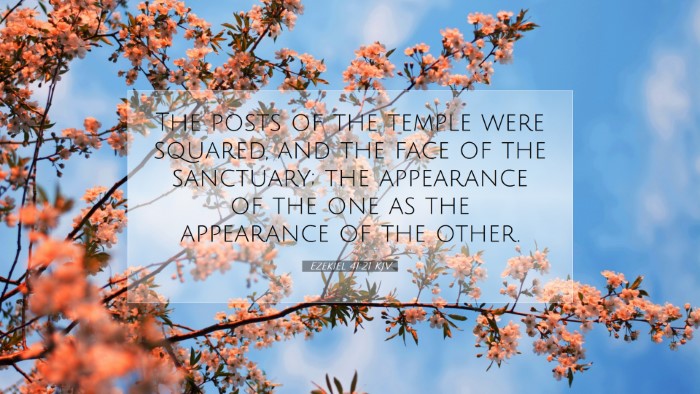Ezekiel 41:21 Commentary
Bible Verse: "And the posts of the temple were squared, and the face of the sanctuary; the appearance of the one as the appearance of the other." - Ezekiel 41:21 (KJV)
Introduction
The verse Ezekiel 41:21 serves as a significant component of the prophetic vision given to Ezekiel regarding the temple. This commentary draws insights from esteemed public domain theologians, including Matthew Henry, Albert Barnes, and Adam Clarke. The intention is to illuminate the rich meanings and theological implications of this verse to those pursuing a deeper understanding of Scripture.
The Structure of the Temple
In this scripture, Ezekiel describes the architectural details of the temple he is shown. The term 'posts' refers to the pillars or supports, while 'squared' suggests a certain geometric precision and symmetry in the design.
- Matthew Henry notes that the squared nature of the posts indicates the divinely ordained order and beauty within God's house, emphasizing both the physical and spiritual craftsmanship of the temple.
- Albert Barnes expands on the idea of symmetry, suggesting that the uniformity speaks to the perfection of God's plans and the harmonious relationship between the divine sanctuary and the individual’s worship experience.
- Adam Clarke adds that the temple represents more than just a physical structure; it embodies the relationship between God and His people. The description of the posts as squared implies stability and security in the faith that the temple represents.
Symbolism in the Description
The phrase 'the appearance of the one as the appearance of the other' highlights the correlation between different elements within the temple. This comparison indicates that all aspects of the temple, whether structural or symbolic, share a common purpose in the glorification of God.
- Matthew Henry asserts that the uniformity in appearance suggests a dedication to divine order and suggests that God’s presence permeates every aspect of life, including worship.
- Albert Barnes interprets this as an illustration of God's presence filling the temple, suggesting that the structure itself is intended to reflect the glory of God, serving as a tangible representation of His holiness.
- Adam Clarke aligns with this thought, pointing out that the temple should be a place of unity, where every component - from the posts to the inner sanctum - works together to reveal God's greatness.
Theological Implications
This verse is rich in theological reflections that hold significance for pastors, students, and theologians today.
- Unity in the Faith: The concept of harmony among the physical structures serves as a metaphor for unity in the Church. Just as the posts and face of the sanctuary are aligned, so too should the members of the Body of Christ be unified in purpose and belief.
- Divine Order: The squared posts suggest that God's creations are characterized by order and precision. This reflects God's righteousness and His ability to establish divine standards that govern the life of believers.
- Presence of God: The description underscores the significance of God's presence among His people. Just as the temple was a dwelling place for God, believers today are called to be the temple of the Holy Spirit, reflecting His glory in all aspects of life.
- Worship Practices: The careful design of the temple also serves as a reminder of the importance of reverence and intentionality in worship. The structure is not merely an architectural feat but a sacred space where worshippers encounter the presence of God.
Practical Applications
Ezekiel 41:21 encourages practical reflections on how the insights gained can be integrated into modern worship and communal life.
- Promoting Unity: Church leaders should foster environments where unity is prioritized, reflecting the symmetry seen in Ezekiel’s vision.
- Emphasizing God’s Order: The church should adhere to the moral and ethical standards set by God, understanding that such order brings about peace and stability.
- Creating Sacred Spaces: In designing worship settings, architects and church leaders should consider the symbolic reflection of God’s holiness and presence, drawing inspiration from the foundational elements described in Scripture.
- Encouraging Reverent Worship: Believers should approach worship with the intent of glorifying God, recognizing that worship is both a communal and individual act reflecting the beauty of God's creation.
Conclusion
In conclusion, Ezekiel 41:21 invites readers to appreciate the sacredness of God's temple and the importance of divine order within it. Through the insights of esteemed commentators, we gain a richer understanding of how this verse informs our theology, worship practices, and community life. The unity and beauty expressed in this verse call us to reflect on how we can embody these principles as spiritual beings in our daily lives.


